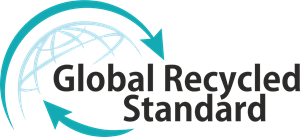Do you know what your sustainable fashion choices are?
Many associate this genre with organic clothing. But sustainable fashion is way more than that.
Terms like “eco” and “green” ruled the fashion and clothing industry before the term “sustainable fashion” was coined.
With the advancement of time and growth of consumer awareness, the terms “fair-trade” and “ethical” appeared. Fairtrade means developing communities have better trading conditions. Whereas ethical clothing stands for the workers in the factories being treated fairly and are ensured safe working conditions.
Today, fashion brands have started to get rid of the “make-use- discard" business model and have started to realize the value of waste textile from their production lines. In short, “make-use- recover" is being adopted.
It’s all about choices
To some of us, “sustainable fashion” embraces all these models, but sustainable fashion is not just about making sustainable purchases. It is about making choices that fit your values and beliefs.
Not buying/ not buying new
The first choice a person can make is to reduce their purchases in the first place. Cut down on the number of clothes you have. Torn garments can be repaired, old clothes can be upcycled and, in some cases, clothes can also be swapped. It’s a fun way of spending your time and can actually be really therapeutic.
Sustainable clothing in competition sports
For a person who participates in sporting events, buying preowned clothes or upcycling clothes might not be possible. Clothing plays a very important role in an athlete's success. Uncomfortable or overcomplicated piece of clothing can cause unnecessary distraction during an athlete’s performance. Hence, finding comfortable and high-performance sportswear is actually a very important step for a sports person and is often overlooked.
Ethical and sustainable activewear is hard to come by. In a world full of fast fashion, an athlete might have to test out
several brands to find functional sportswear that suits them and their values both.
If you are buying...
Some people don’t know that there are several clothing options available, these range from:
1. Organic Fibres
2. Natural Fibres
3. Fairtrade Sources
4. Ethical Production
5. Low Chemical / Low Energy Production
6. Zero Waste techniques
7. Upcycled techniques (pre and post-consumer)
But always remember to do your own research before clicking buy. A good rule of thumb is to look at the brand’s website. What are their values like?
Are those values aligned with yours?
Are they transparent with their information regarding their operations?
Are they certified?
So, what are your fashion choices? It’s high time that you introspect!




